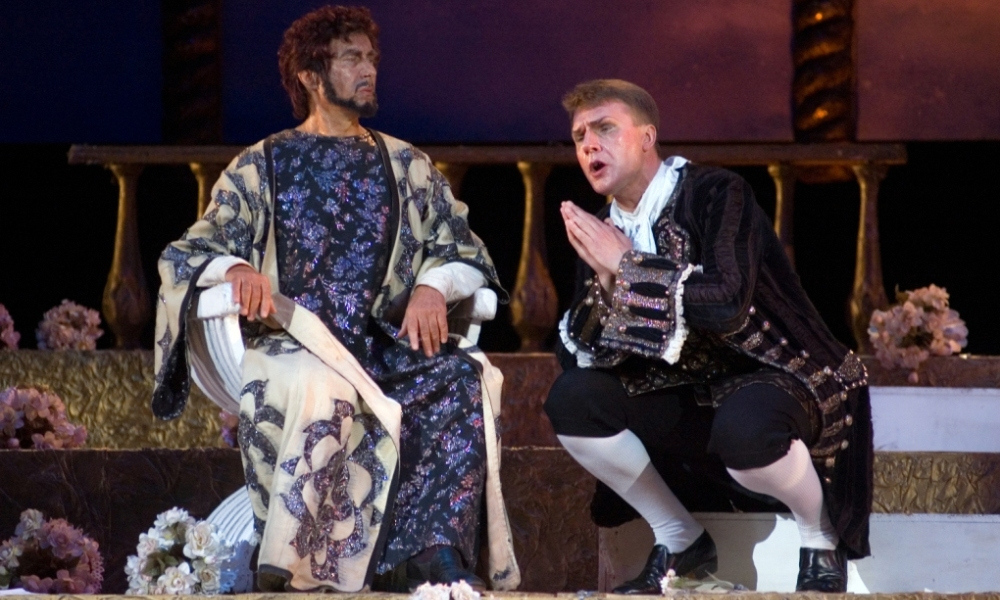I teach English because it was the subject I was strongest in when I was at school. But occasionally, I need to stop, look in the mirror and remind myself that not all of my students will find my chosen subject as enjoyable or as accessible as I did at their age.
I can honestly say I've committed the sin of making my lessons biased toward a visual learning style. Maybe it's because I'm a frustrated artist; in my lessons my whiteboard doodles are a source of amusement and at home I'll spend hours watching art documentaries while blaming my unopened set of paints on my lack of time rather than my procrastination or, as my students would say, my lack of ability.
But I have found that drawing on the board enables me to clarify my instructions, and perhaps the greatest benefit of teaching and learning through pictures is two-fold: imaginations can be primed and personal responses can be triggered as the foundation of a full critical analysis.
Most of us use film versions of Shakespeare's plays to make the text more accessible. In a similar way, I believe that pictures can enable educators to address those misconceptions which can result from a student's lack of background knowledge.
For example, when reading a Sherlock Holmes story with a Year 9 class, several students thought that the photo on the front of their reading books was Conan-Doyle, but it was in fact a colour still of Jeremy Brett from the 1980s television dramatisation.
When I first used pictures to teach Coleridge's 'The Rime of the Ancient Mariner' to a Year 8 class, I was struck by how the use of A3 sized copies of Gustave Dore's etchings seemed to enhance all students' creative input and their overall enjoyment.
From this point on I saw learning with the aid of pictures not just as a separate style or preferred teaching method, but as a way of making ideas and words more solid and understandable for all pupils regardless of language, gender, ability or cultural background.
For my more teacher-centered lessons, I always include at least one segment from a film or TV series. For one thing, it enables students to see a relation or relevance to modern popular culture, and for another, it breaks up the lesson and provides an alternative stimulus to verbal instructions and worksheets.
In the past I have used: a Pepsi advertisement parodying the 1970s 'Kung Fu' TV series and martial arts films, the revamped Yellow Pages ads based on the 1980s Fly Fishing by J.R. Hartley version in my Year 9 lessons, and for Year 11, the creepily surreal Metz 'Beware the Judderman My Dear' advertisement in which I draw students' attention to stylistic and genre-based similarities with Little Red Riding Hood and the beginning of the film ‘The Illusionist'.
Regarding the use of film versions to accompany Shakespeare texts, I've always found it essential to distinguish that the director and the writer are two different people, and the film and the play are two different text types. Given that films are text types in their own right, directors can often be seen as adding or discarding scenes and lines or incorporating their own devices into their films, such as Zeffirelli's use of music in his 1968 version of Romeo and Juliet or Brannagh's use of black and white as symbolism in his 1995 version of Othello (such as with Othello's mask in the beginning, and the chess pieces during Iago's soliloquy at the end of Act 1, Scene 3).
'The Rime of the Ancient Mariner' remains one of my favourite pieces of literature and shortly after I first taught it in the UK, I encountered the work of Benton and Fox. In discussing poetry for 12- to 14-year-olds, Benton and Fox refer to ‘rites of passage' poems, in the sense that pupils undergo significant changes in their lives during this period and a teacher's choice of poetry must reflect this:
‘One of the commonest features of adolescent writing, whether it takes the literal or the metaphorical form, is the idea of the journey.' (Benton and Fox, 1985)
For example, in relation to 'The Rime of the Ancient Mariner', Benton and Fox (1985) write that it ‘dramatises the relationship between teller and listener', in that the symbolic nature of events are accessible to most adolescent readers.
'This is because ‘the journey occurs in highly particularized settings which are invested with such generalising weight that they come to represent a backdrop of the whole of creation. Hence there are constant details of the sky and the planets, of the changing speed and navigation of the ship, and of the powers that work in the unseen depths.' (Benton and Fox, 1985)
Even now, having taught 'The Rime' to students with varying language needs in international schools, I can't help feeling it is the combined effect of Coleridge's words and Dore's etchings that have made the unit work so well; the Dore etchings provided a 'way in' to the ballad in that pupils actually felt that they were able to uncover their own layers of meaning.
For example, one student's response to a recent questionnaire was ‘I thought it was quite good once we had looked at it a bit more deeply'.
Perhaps it is a telling sign that a pupil can perceive the use of visual images as facilitating a more complex response. In this case, pupils do not necessarily equate visual forms with ‘easy' work, but instead see them as a means of rendering the potentially unfamiliar somehow accessible, thus allowing them to explore the meanings of the literary text when, previously, they might not have gotten that far.
In terms of a reader's imaginative appreciation, Benton and Fox (1985) recommend that pupils must be given ‘a sense of the whole'. In this sense, mapping the voyage in some way is essential. Other picture-related suggestions are murals, cartoons and even a board game.
I've occasionally taught 'The Rime' to Year 12 Literature classes and on each occasion I've been uncertain to what extent I should facilitate students' understanding and appreciation of the poem by using Dore's etchings, and the film 'Pirates of the Caribbean: Dead Man's Chest' as visual aids.
This is because the nature of any work involving a personal response, whether creative or analytical, is to some extent subjective and I want to avoid the danger of short-circuiting this creative process for my students.
Given a teacher's role as the primary facilitator within the classroom, I am careful to make use of a range of visual stimuli as a form of differentiation, and as means to an end, depending on my lesson objectives and the assessment criteria.
References
Benton, M., Fox, G. (1985). Teaching literature: Nine to fourteen. Oxford; Toronto: Oxford University Press.
How could you use visuals as a stimulus when teaching your next topic?
If you are already using visuals, how can you measure the impact of this approach on student learning?



